Anchors: Best anchor for a sailboat?
We have all been there. Late at night, the wind direction changed and the wind is up to 35 knots. Your anchor alarm is on which is located next to your head. Sleep comes in bits and pieces until morning where a more stable panic sets in until this wind dies down… You ask yourself “what is the best anchor for a sailboat?”
The basics
If you are in the market for a new anchor then you will probably purchase the same anchor like the one you are replacing. Anchor brands are a bit like a Ford vs Holden thing. But if this is your only reasoning, then please think again. Advances in anchor technology have progressed and it is worth having a closer look at the different types of anchors that are available in today’s market. Stop and ask yourself: “What is the best anchor for a sailboat?”
The anchor naming convention makes it somewhat confusing with a combination of proprietary names (brand names) and common names. For example, the original Delta® design is made by Lewmar®. So this easily recognisable design is referred to as a “delta anchor” but also simply by its generic name: “Wing Anchor”. It is a bit like “hoovering the floor”. Hoover® is a brand name but is, at the delight of the company, now verbalised and synonymous with vacuum cleaning. So if you dropped something on the floor, you get the hoover out even if your vacuum cleaner is a different brand…
Then we have different materials such as galvanised steel, stainless steel or aluminium. Each of these could be the best material for you depending on your boat and usage.
Also, size matters. Different sizes (weights) determine their suitability for your purpose.
So picking the correct anchor can be confusing. Let’s have a look at some of the most popular anchor’s pros and cons to help determine which anchor is right for you…
Specific anchor types
- Claw type anchor -
Bruce® or Claw Anchor
The Bruce® was made in the 70s by the Bruce Anchor Group. Now that their patent is no longer current, there are many imitations on the market that look and do the same thing if not better.
Better known as a claw anchor, the Bruce is popular with recreational boat owners as it is a very good all-purpose anchor that sets (and re-sets) well and easily in most types of seabed except harder surfaces such as heavy clay or heavily grassed areas.
It’s holding power is somewhat less per pound than alternative anchors which means that you need to purchase a bigger anchor comparatively.
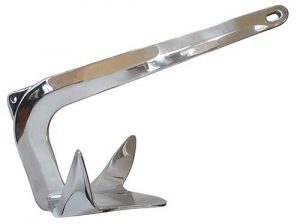
Pros:
- Easily sets good all-rounder
- Performs well in most bottoms
Cons:
- Odd shaped design so a little harder to handle
- Less holding power per pound
- Has trouble in a hard seabed such as clay or heavy grass
- Plough type anchors -
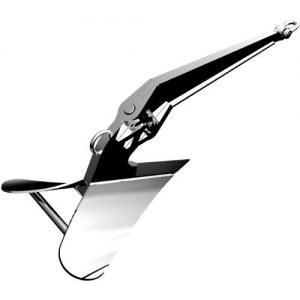
CQR™ or Plough Anchor
The CQR plough anchor is the best known, older style plough anchor in this category as it dates back to the 1930s. The CQR is popular with blue water sailors. However, independent testing data shows that the CQR performs less effectively compared to other types of anchors. Because of this, the CQR always seems oversized to compensate for its performance. On the other hand, the hinge incorporated on the CQR makes it responsive to changing conditions such as tidal or wind changes. The CQR is a general workhorse okay on most seabeds except rocks.
Delta™ or Wing Anchor
The Delta is perhaps the most prevalent anchor on boats today. Many of the main manufacturers supply a wing anchor as a standard feature. The Delta anchor has substantially more holding power compared to the Bruce as independent tests have shown. It has therefore good holding power on most seabeds but struggles a bit where a rocky bottom is found. Unlike the CQR which is contracted with a hinging mechanism, the Delta is constructed as a single piece as is a plow style anchor. The most significant difference between these anchors is the fact that the CQR has a hinged design whereas the Delta is a one piece anchor without moving parts.
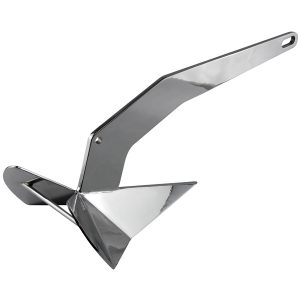
Pros:
- Plough anchors perform well in most conditions
- Due to the shape, plough anchors fit most bow-rollers
Cons:
- Both solid and hinge shape make stowage difficult
- Lager and heavier than other types of anchors
- Has some holding issues in rocky conditions
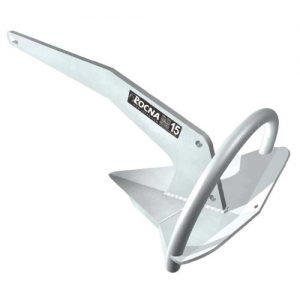
Pros:
- Extremely high holding capability
- Can be deployed on most seabeds
Cons:
- Difficult to stow
- Expensive
Rocna Anchor
Arguably, the most popular anchor around in today’s market. The Rocna is essentially a plough anchor like the Delta and CQR except for two major design variances.
- The Rocna is much sharper. The chisel tip penetrates most seabeds including solid clay, heavily grassed areas and kelp.
- The Rocna has a distinctive “roll bar” so that the anchor will orientate itself correctly even in difficult circumstances. Conversely, it makes the Rocna a bit cumbersome which may hinder storage or deployment on bow rollers.
The Rocna is not the only brand with these distinctions. Other brands include the Bugel, the Supreme and the Manson.
- Fluke type anchors -
Danforth™ or Fluke Anchor
™The Danforth, or Fluke anchor, is a very popular anchor choice for smaller vessels.
Fluke is, in essence, a mud and sand anchor and performs very well in those conditions. Conversely, it is one of the worst performers in all other conditions. Still, if you find yourself under these conditions, a fluke anchor is an inexpensive and reliable choice.
For yachties, a fluke can be a great solution as a secondary anchor or a stern anchor.
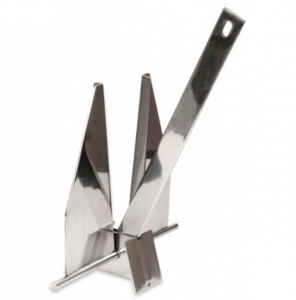
Pros:
- Performs well in mud and sand
- Is relatively small so easy to stow
- Suits smaller boats or serves well as a stern anchor on yachts
Cons:
- Does not hold well (or not at all) other than on muddy or sandy seabeds
If you want to know a bit more about sea-anchors then please follow this link:
Anchor material
In general, anchors, for the purpose of this article, are made from 3 possible materials.
- Galvanised steel,
- Stainless Steel, or
- Aluminium
It would not be fair to say that one is better than the other without determining the usage of the anchor and your budget. Below is a quick summary of the pros and cons of the 3 options…
Galvanised Steel Anchors
Pros:
- Cheap option
- Very strong
- Corrosion-resistant if galvanised
Cons:
- Galvanisation can deteriorate
- Not as nice looking as stainless steel
Stainless Steel Anchors
Pros:
- Looks very classy
- Strong
- Corrosion-resistant
Cons:
- Most expensive option
- Needs a bit of maintenance to keep the aesthetics
Aluminium Anchors
Pros:
- Lightweight
- Looks good
Cons:
- Expensive option
- Less strong than steel
- Corrosion-resistant
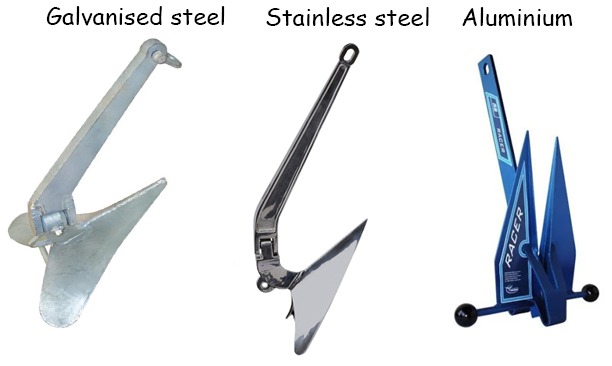
Anchor size & weight
It is pretty obvious that anchors come in different sizes. The size of the anchor depends on the size, type and tonnage of your boat. Each manufacturer has detailed size charts available that will tell you the optimal combination or weight, size and cost.
For example, for a Bruce claw anchor, The company issued the following chart so you can determine the correct anchor for your application. This includes chain diameter and length as well as rode length.
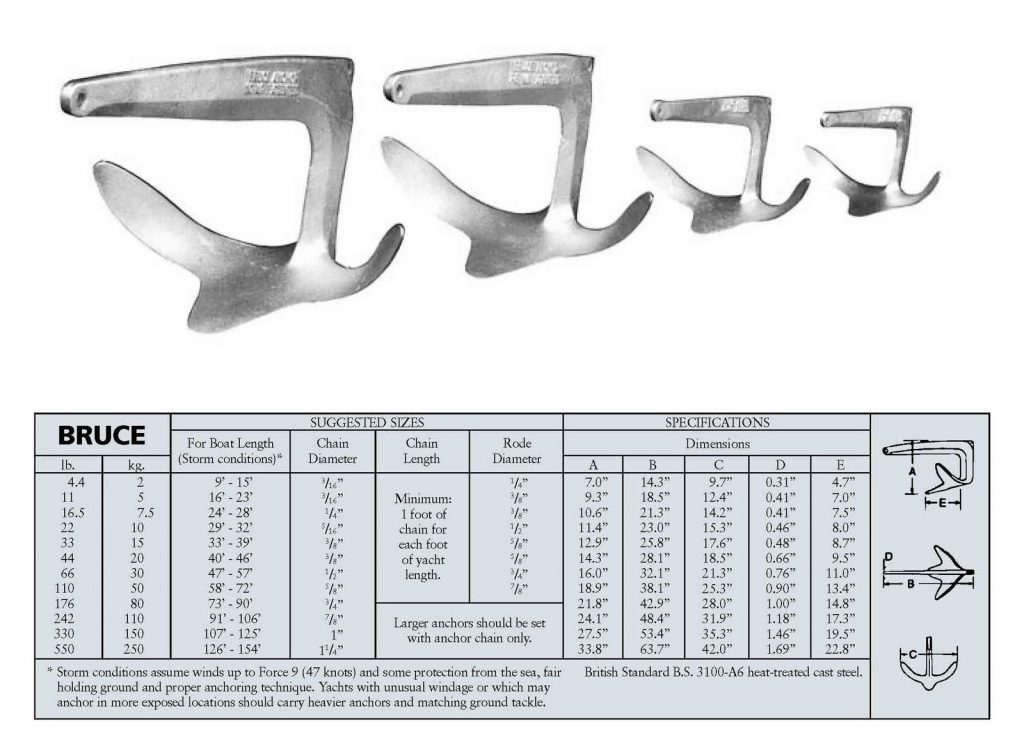
Best anchor for a sailboat?
So what is the best anchor for a sailboat? I like the Rocna as it served us well in rough conditions and in a number of different situations.
If you disagree or if you have any tips or suggestions about anchors then I would love to hear from you. Just submit a comment below…
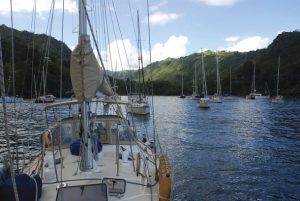
Pingback: How to anchor your sailboat - Tall Tell Tales
Pingback: Buying your first sailboat - Tall Tell Tales
Pingback: Safety equipment on a sailboat - Tall Tell Tales